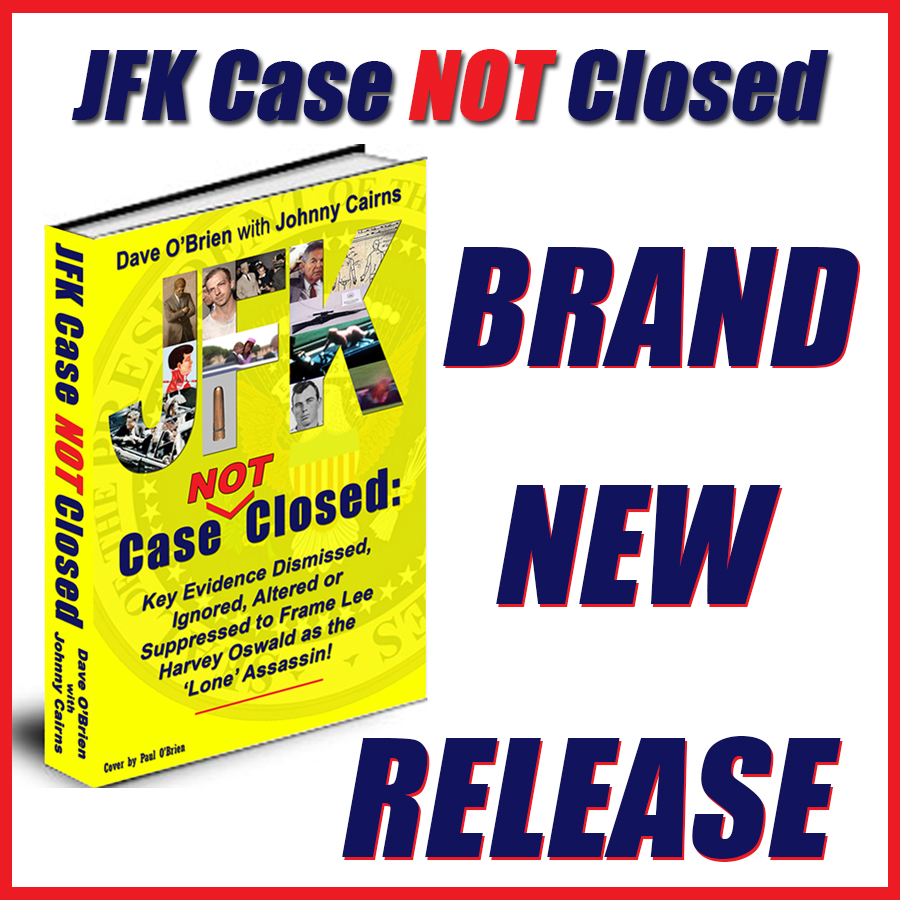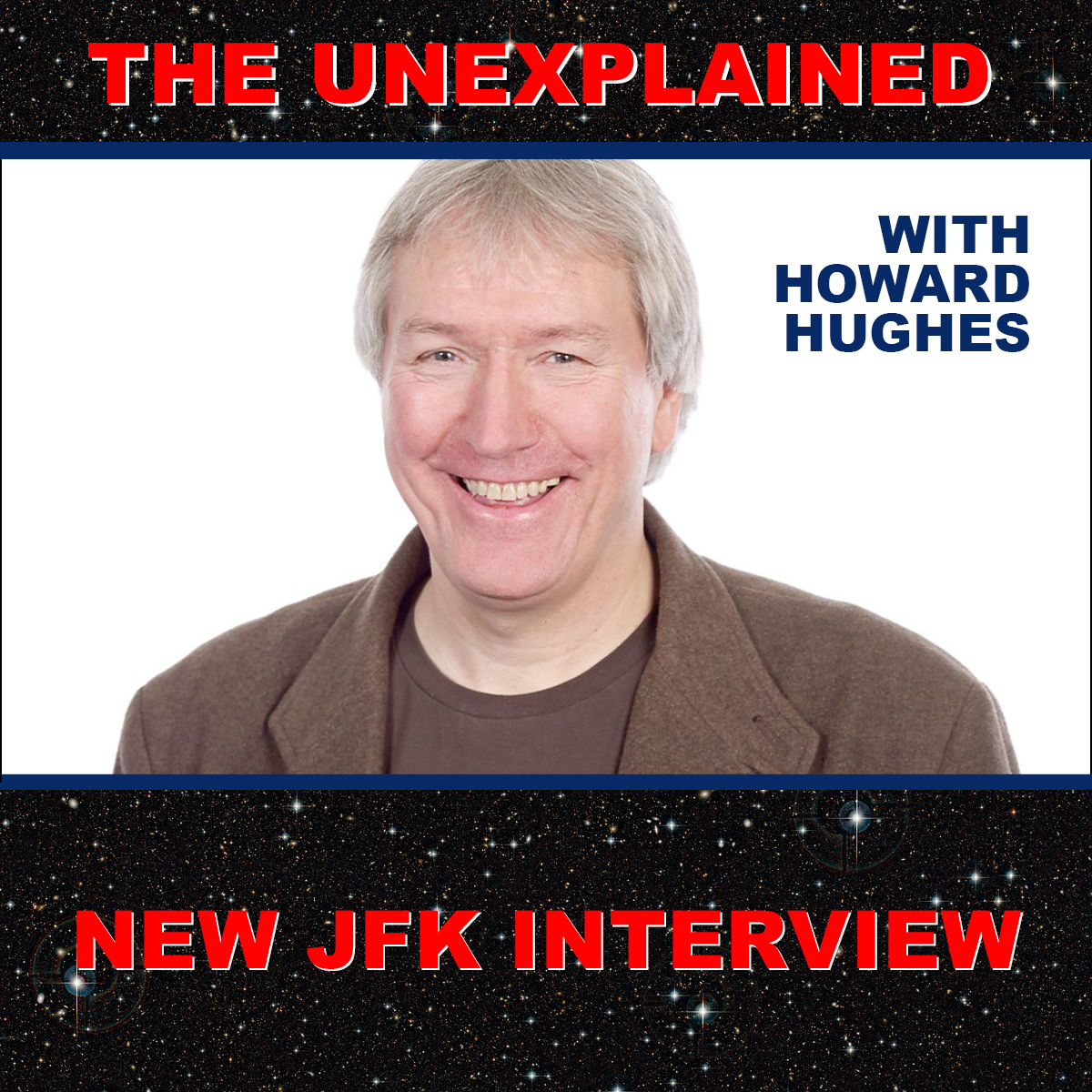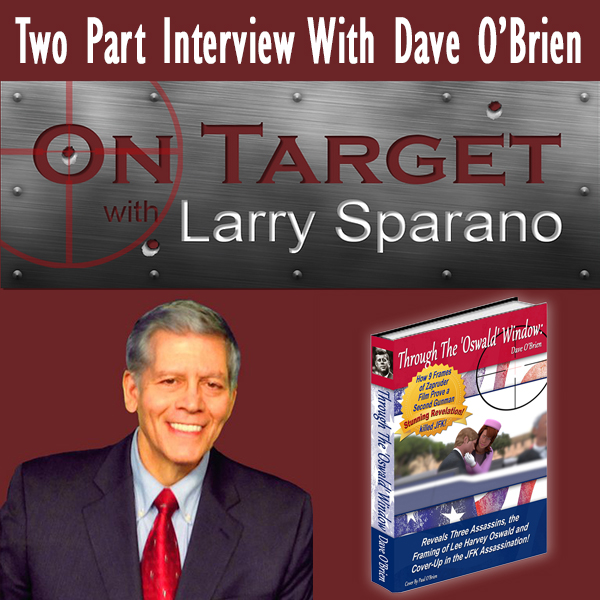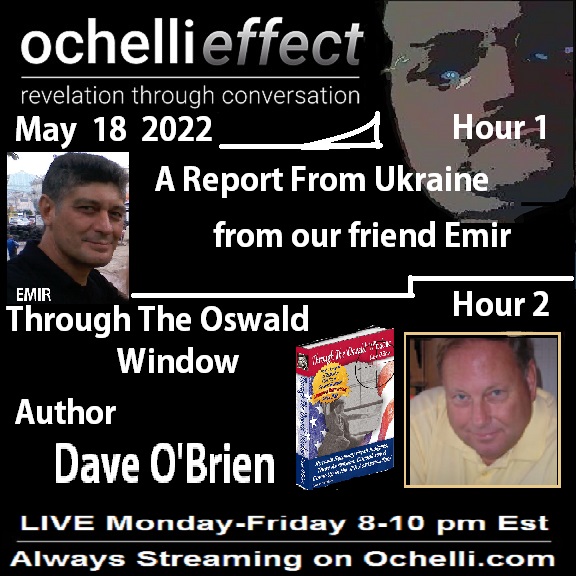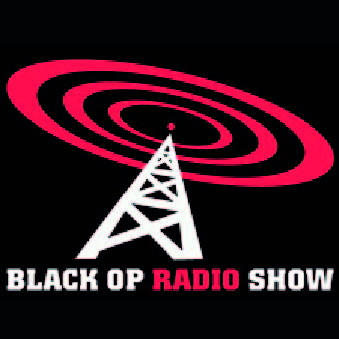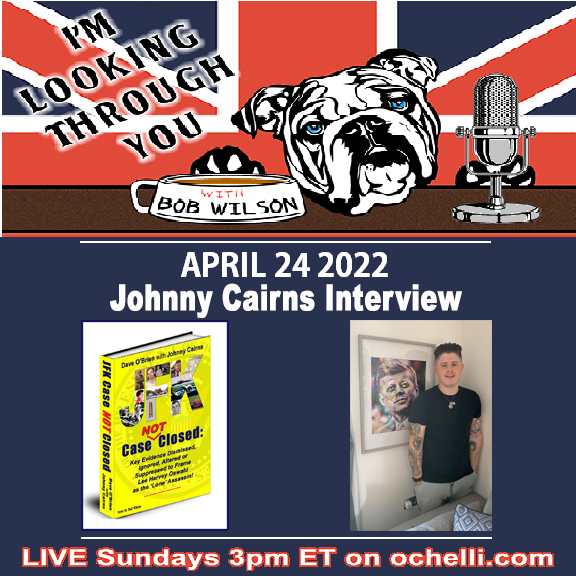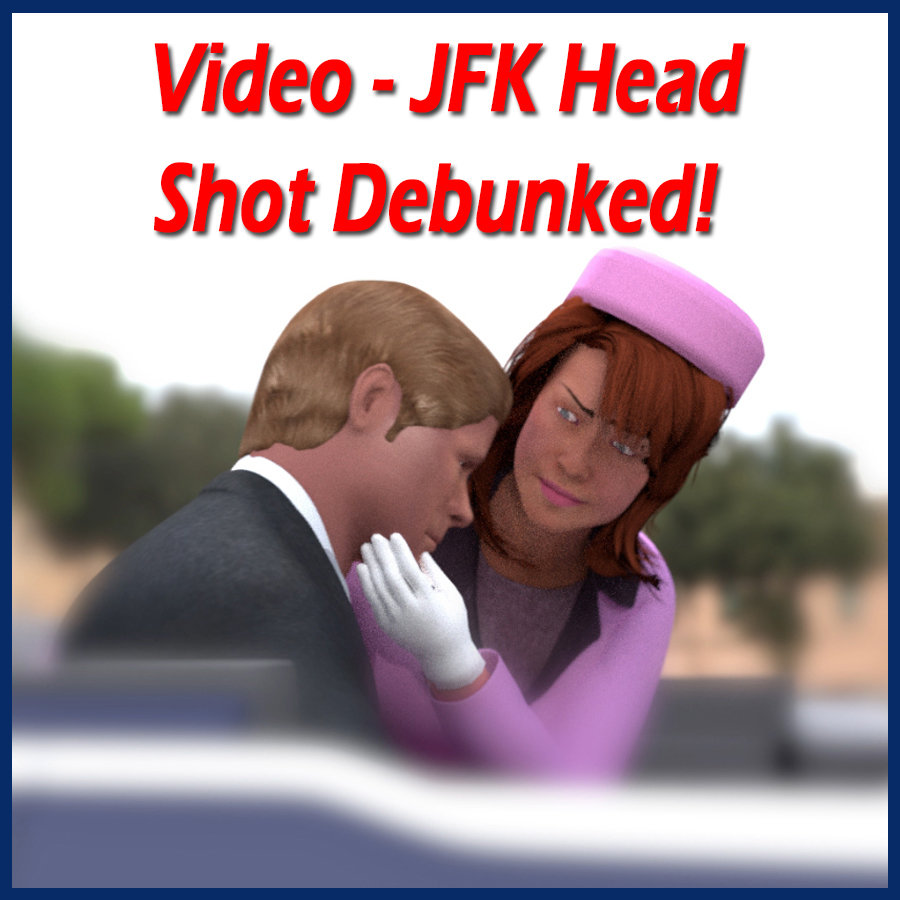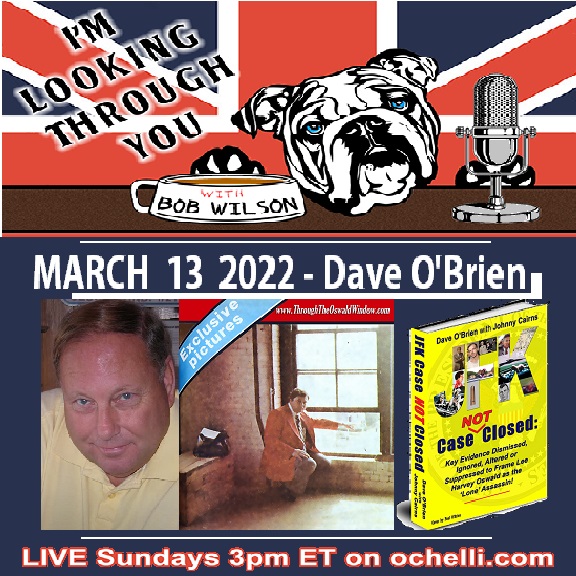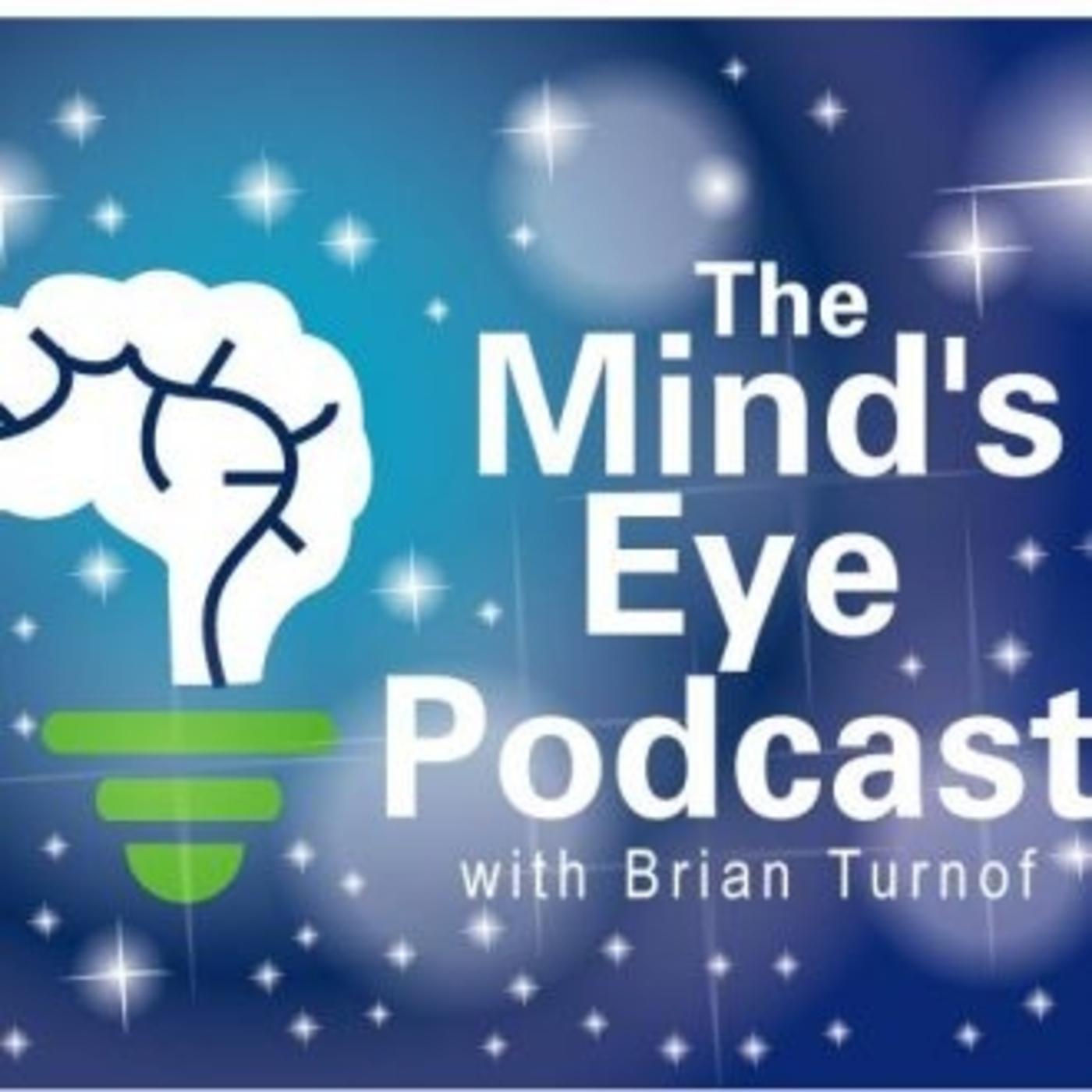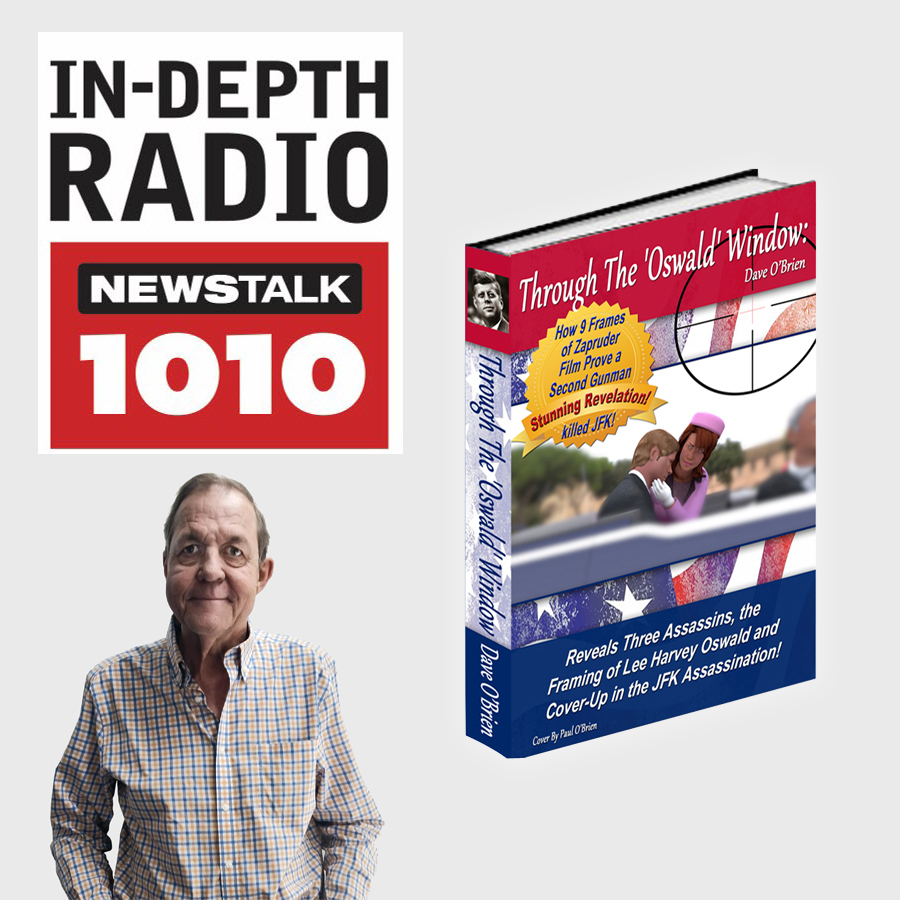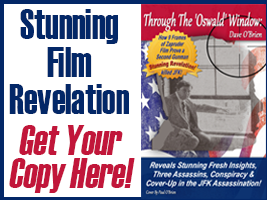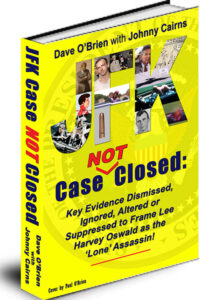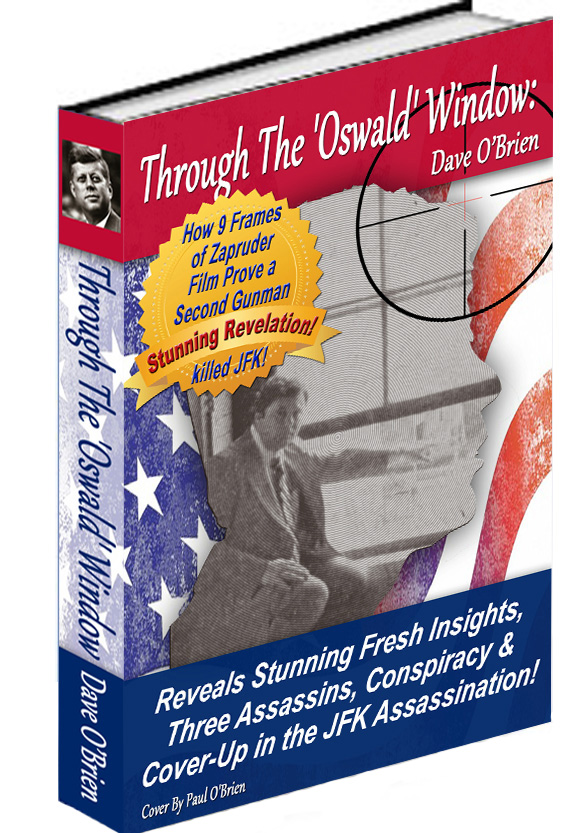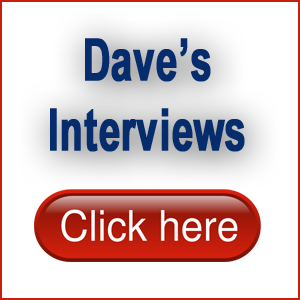Dr. Cyril Wecht Disappointed by Oswald Hung Jury Verdict but Says Mock Trials on JFK Assassination Should Continue
Through The ‘Oswald’ Window author Dave O’Brien
interviews Dr. Cyril Wecht about the hung jury verdict
in the mock trial of accused assassin Lee Harvey Oswald.
Dr. Wecht is disappointed yet undaunted by the result.
Dr. Cyril Wecht, M.D., J.D., is a noted JFK assassination
researcher and critic of the Warren Commission. As both
a long-time forensic pathologist, lawyer and medical-
legal consultant, Dr. Wecht is acclaimed for his expert insights
into high profile crimes such as O.J. Simpson, JonBenet
Ramsey and President Kennedy. Dr. Wecht presently serves
as Chairman of Citizens Against Political Assassinations
(CAPA), which hosted the latest mock trial of Oswald.
By Dave O’Brien
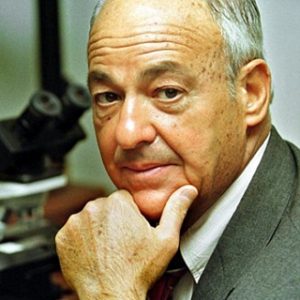
You won’t find Dr. Cyril Wecht calling the latest mock trial of Lee Harvey Oswald as the accused assassin of President John F. Kennedy a mockery of justice even though he has earned the right perhaps more than anyone.
Few researchers and critics of the Warren Commission’s conclusion that Lee Harvey Oswald was the lone assassin of JFK have put their reputation and career on the line as much as the long-serving Medical Examiner of Alleghany County in Pittsburgh, Pennsylvania.
At every opportunity, Dr. Wecht has criticized the ‘lone assassin theory’ by using his expertise to challenge the ballistics evidence, medical records and autopsy findings accepted as fact by the Warren Commission.
He is among a handful of forensic pathologists to examine these records in the National Archives. He believes these materials are at odds with the Warren Report’s account as to how President Kennedy died on November 22, 1963.
And so, you might expect Dr. Wecht to be particularly frustrated by the hung jury verdict slightly in favor of conviction. Six jurors voted “Guilty” to the charge that Oswald murdered President Kennedy and five jurors voted “Not Guilty.”
Without a unanimous 11-0 verdict on Oswald’s guilt or innocence, the hung jury on November 17 in Houston left critics of the Warren Commission frustrated by the result.
But Dr. Wecht has already moved on. “I’m all in favor of mock trials. I’d like to see one every week somewhere in America,” he states.
He is also realistic. “I don’t see a mock trial verdict of not guilty leading to the government reopening the case,” Dr. Wecht admits. But, as he sees it, that doesn’t diminish the importance of continuing to conduct them.
GENERATIONAL DIVIDE?
Apparently, age may have been a factor in a lack of verdict being reached in this latest mock trial. There are reports that younger jurors tended to vote in favor of Oswald being guilty while older jurors were swayed more toward Oswald being not guilty.
“That fits the national polls that tell us that the longer young people become removed from the event and the Warren Commission, the less they know about it, the less they think about it and the more likely they are to accept things historically,” offers Dr. Wecht.
It needs to be pointed out that in this mock trial version of The State of Texas versus Lee Harvey Oswald, the 11 jurors were asked to vote solely on the defendant being guilty or not guilty as an assassin of President Kennedy. There were no lesser charges to consider, such as conspiracy to commit murder.
“I would love to ask the jurors who voted for guilt if their vote infers that they believe Oswald was a sole gunman or that he was guilty of something else,” he reflects.
Ever the optimist despite the hung jury, Dr. Wecht sees a silver lining in CAPA’s mock trial. “In order to convict somebody, you must have a unanimous verdict, so to get almost half of the jurors, despite the government’s presentation, to vote not guilty, it’s quite an accomplishment.”
One of the problems affecting the verdict was the time constraint of both the mock trial and the crucial jury deliberations.
A real trial of Lee Harvey Oswald would have taken weeks with the jury given as much time as needed. This latest mock trial was a two-day event and the jury could only deliberate for two hours.
CIRCUMSTANTIAL GUILT?
Nobody saw Oswald shoot President Kennedy that horrible day in Dallas, nor did he ever confess before Jack Ruby silenced him forever, but some legal scholars say the circumstantial evidence likely would have been enough to convict Oswald had he lived to stand trial.
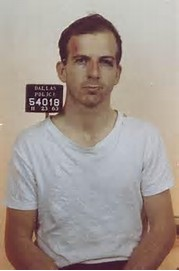
Such incriminating evidence a mock trial would hear includes:
• Oswald worked in the building from which all the shots are alleged to have come, giving him opportunity to be the assassin.
• Witness Buell Wesley Frazier, who drove Oswald to work that morning, says the named assassin carried a long paper package into the Texas School Book Depository Building, falsely claiming it to be curtain rods.
• The rifle found near the 6th floor southeast corner window was purchased and owned by Oswald.
• A palm print was found on the rifle, identified as belonging to Oswald.
• Oswald’s wife Marina took a picture of him in the backyard posing with the rifle allegedly used in the assassination.
• Oswald left the building after the shooting, went home, picked up a revolver and is alleged to have murdered Dallas police officer J.D. Tippit during efforts to escape, considered actions of a guilty man.
While this circumstantial evidence would prove challenging for a defense team to refute, hundreds of books over five decades present persuasive evidence of other gunmen in Dealey Plaza.
“I don’t think Lee Harvey Oswald was a total, total patsy, that he knew nothing at all or that not a damn thing has to do with him at all,” reflects Dr. Wecht.
The preponderance of evidence may suggest a conspiracy to assassinate President Kennedy, but it does not exonerate Oswald as an assassin as the CAPA mock trial demonstrates.
MISSED OPPORTUNITY?
One exception may be Oswald’s claim to be in the second-floor lunchroom at the time of the shooting. If true, he couldn’t have been the Presidential assassin as charged.
Once Oswald was taken out by Ruby and lawyer Mark Lane was not allowed to represent Oswald before the Warren Commission hearings, one witness who could make Oswald’s alibi possible was simply dismissed as mistaken.
We don’t know if Carolyn Arnold’s disregarded Warren Commission testimony that she saw Oswald on the first floor of the Book Depository Building just five minutes before the shooting held any more weight with the mock trial jurors, but there still could be demonstrable evidence that Oswald could not have been the assassin at the window named after him.
As the reader here, like a juror, you will be able to decide if the following evidence establishes enough reasonable doubt for you to find Oswald “not guilty” of murdering John F. Kennedy.
COP CONFRONTATION
The Warren Commission asserts that the accused assassin Oswald was in the second-floor lunchroom some 90 seconds after the shots were fired.
Oswald is alleged to have fired all the shots from the 6th floor southeast corner window, stashed his rifle nearby, zigged and zagged his way through a maze of boxes to the farthest corner of the building, then raced down four flights of stairs to the second-floor lunchroom.
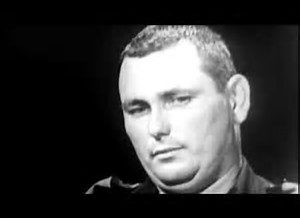
Only seconds after his arrival, the Warren Commission says the assassin was confronted by his boss Roy Truly and Dallas police officer Marrion Baker, who pointed his firearm at Oswald. Both Truly and Baker confirm this incident and timeline.
The Commission conducted a test and found that Oswald could have shot the President and made it to the second-floor lunchroom in 90 seconds.
Case closed…Or is it?
There’s only one problem that suggests Oswald likely didn’t do the incriminating 90-second sprint attributed to him.
But first, a question to ponder – If Oswald just shot President Kennedy and was in a hurry to escape, why would he sprint down four flights of stairs only to take a detour to the lunchroom to stop and pick-up a beverage?
Oswald’s defense team would have conducted its own re-enactment and discovered, as I did, that the accused assassin must have been in the second-floor lunchroom as the shots were occurring – just as he said he was.
SHOCKING OBSERVATIONS
In 1979, as part of my research and coverage of the House Select Committee on Assassinations hearings, I became one of few people ever granted access to the ‘Oswald’ window when the Texas School Book Depository Building was locked and sealed from the public.
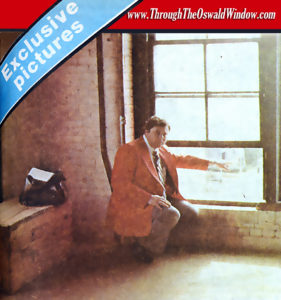
From that window, as shown here, I was able to make shocking observations that establish, for instance:
• Only two shots could have come from that sniper’s nest.
• At least one more gunman had to be positioned in Dealey Plaza.
Granted, that does not prove that Oswald was not guilty of being the assassin who fired the two shots from the southeast corner window.
A total of four history-challenging observations from the 6th floor sniper’s nest is detailed in my book, Through The ‘Oswald’ Window, but while they are suggestive of a conspiracy to kill JFK, they do not disprove Oswald as an assassin.
It was my own re-enactment of Oswald’s race to the second-floor lunchroom that might possibly establish cause for reasonable doubt in the minds of a jury.
After simulating the final shot from the southeast corner window, I ran to the northwest corner stairwell (see diagram below), briskly descended four flights of stairs and went to the second-floor lunchroom.
Timed by myself and my Dallas County host Bill Smith, I was able to arrive at the lunchroom in almost exactly 90 seconds.
Admittedly, Oswald could have done as the Warren Commission claimed, as I did. But here’s the problem not considered by the Commission:
THE EYE TEST
Both Roy Truly and officer Baker testified that when they confronted Oswald in the lunchroom, he did not appear suspicious in any way.
Truly identified Oswald as an employee who had the right to be there. Satisfied, he and officer Baker ran off in search of a suspect.
The case for reasonable doubt may be Oswald’s demeanor at that critical confrontation, given the timing of it.
Truly and Baker report that Oswald appeared calm and collected, completely unflustered even with a gun pointing at him. We are asked to believe that a guilty unarmed man, suddenly stopped from escaping by a police officer with a loaded gun, has no visible reaction to the possibility of being arrested as the murderer of the country’s President?
OK, Oswald could have been one cool customer!
If this tense moment wasn’t unnerving enough, we are asked to believe that the Oswald-Baker confrontation occurs mere seconds after the assassin arrives at the lunchroom.
We are told that he shoots the nation’s President, then sprints the farthest distance on the sixth floor and down four flights of stairs.
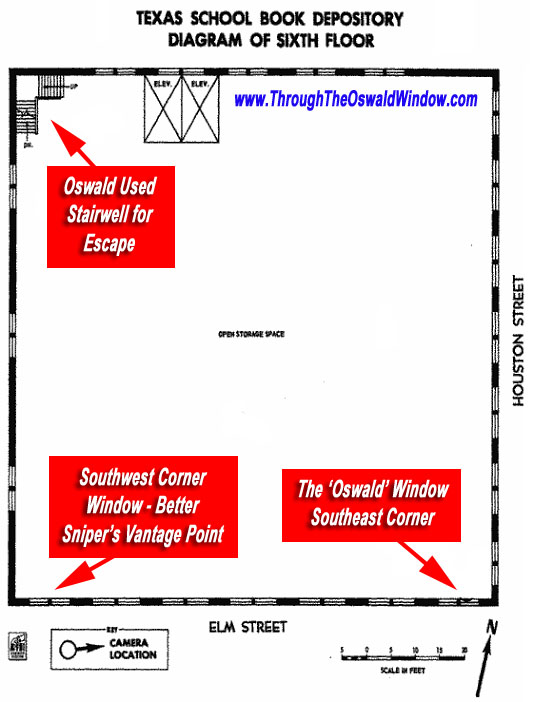
Further, there are no witnesses who say they saw Oswald flee from the 6th floor down to the lunchroom.
So, if this re-enactment was relevant in establishing Oswald’s guilt in the minds of the Warren Commission, it should also be presented as relevant evidence for a jury of his peers to ponder.
When I re-enacted Oswald’s suspected race from the assassin’s window to the lunchroom four floors below, I was hardly calm and collected upon arrival.
Although I merely ‘pretended’ to shoot the President of the United States, upon arriving at the lunchroom, I was noticeably short of breath. My cheeks were flushed, and my palms were a bit sweaty and shaky. I was anything but calm and collected as Oswald is described by two credible witnesses.
Oswald was able to pass the eye test of a cop trained to spot a person of suspicion. I would not have passed that test and it might be prudent to encourage the jurors to imagine if they would have passed such an eye test.
If the answer is “no” in the minds of the jurors, to what degree might the defense have established reasonable doubt?
In this case, the law mandates that the State is required to establish guilt beyond a reasonable doubt. Otherwise, Lee Harvey Oswald would not have been convicted as the assassin of President Kennedy.
Suddenly, while the totality of the circumstantial evidence supports the notion that Oswald was the assassin at the 6th floor window, this more personal and human insight brings some credibility to his claim that he was not that assassin, that he was as he claimed – “I’m just a patsy.”
Could the next mock trial somehow re-enact Oswald’s alleged movement from the sniper’s window to the lunchroom to establish his likely physical state when confronted by officer Baker?
With the co-operation of the Sixth Floor Museum at Dealey Plaza, it might be a demonstration of reasonable doubt worth presenting.
THE CASE FOR CONFEDERATES
AND REASONABLE DOUBT
A problem for mock trial juries is that much of the evidence they are asked to consider doesn’t preclude Oswald from being guilty of murder as charged.
Rather, most of the evidence, such as the persuasive argument researchers like Robert Groden and Dr. Cyril Wecht present in dispute of the ‘Single Bullet’ theory, points toward there being more than one gunman.
As Dr. Wecht points out, the CAPA mock trial jury, like previous attempts, was asked to render a verdict of guilty or not guilty to Oswald being an assassin, not necessarily the only assassin.
“Nobody would say that Oswald acted alone from beginning to end and nobody else had any input at all,” Dr. Wecht opines. “But that does not show that Oswald was not guilty.”
Further to Dr. Wecht’s curiosity, it would also be interesting to ask the jurors of the CAPA mock trial who voted in favor of ‘not guilty’ exactly what prompted them to exonerate Oswald.
Like the 1969 Jim Garrison prosecution of Clay Shaw for ‘conspiracy to commit murder’ in the death of the President, jurors later revealed that the New Orleans District Attorney proved the case for conspiracy in their minds, but did not show, beyond reasonable doubt, that Clay Shaw was associated with that conspiracy.
Once a conspiracy is established, then Oswald’s role in that conspiracy, if any, becomes debatable. Was he one of the assassins and therefore guilty of murder directly, a conspirator who was framed by his associates as the lone assassin or not involved at all?
Suddenly, if other assassins and conspirators are in play, confederates exist who could have made Oswald the patsy he claimed he was until his dying breath.
This could possibly support his claim that he was in the second-floor lunchroom and was therefore not the shooter from four floors above.
While it was easy for the Warren Commission to dismiss Oswald’s story as to his whereabouts at 12:30 CST, we must ponder if a jury would see it the same way at the time of deliberation if it believed that at least two gunmen, denoting a conspiracy, resulted in JFK’s death.
The question now becomes: Was Oswald one of the assassins and should be found guilty or was he framed as the ‘lone’ assassin by his fellow conspirators?
And if a jury believes that there was not a ‘lone’ assassin, but rather at least two gunmen, could this in any way provide reasonable doubt as it relates to the government’s claim that Oswald was at that window at 12:30 CST?
My book explains how easy it would have been to manipulate Oswald without him knowing until after the shots, that he was set up as the fall guy.
If true, could a skilled defense team successfully argue that if there is reasonable doubt that Oswald was at that window, there is also reasonable doubt as to his guilt?
Unlike many other conspiracy theorists, Through The ‘Oswald’ Window details my belief that Lee Harvey Oswald was one of the conspirators, just not one of the assassins. On this point, Dr. Wecht and I agree.
THE FRAMING OF OSWALD
It is my contention that Oswald’s role was to prepare the 6th floor southeast corner window as a sniper’s nest for the actual assassin. Oswald’s access to the 6th floor as an employee makes this feasible.
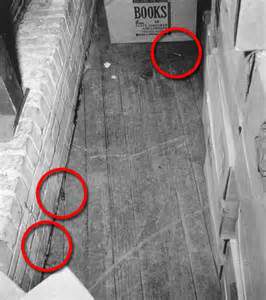
Unbeknownst to Oswald, it becomes entirely possible that his fellow conspirators took his Mannlicher-Carcano rifle from his home and left it at the ‘Oswald’ window to incriminate him, along with three pre-fired shell casings to match this weapon.
Having done his job several minutes before the 12:30 shooting, he can now venture down to the second-floor lunchroom where he says he was having lunch as the shots rang out.
This would explain his calm, unflustered physical state 90 seconds after the shooting when approached by Truly and officer Baker because he hadn’t just arrived at all. He had been there upwards of five minutes.
After having narrowly avoided arrest by officer Baker, and knowing he was a conspirator who had just been betrayed, the targeted Oswald escapes the building, but not the history books thanks to the Warren Commission.
Does this scenario plant the seed for reasonable doubt in support of Oswald’s claim to be in the lunchroom and not the sniper’s nest at the time of the shots?
A prosecution rebuttal notwithstanding, mostly in the form of the above circumstantial evidence, if you as a reader sense any reasonable doubt pertaining to the government’s claim that the accused Oswald was the sniper at the 6th floor window, we can assume that a jury would do likewise.
And if the State cannot prove guilt beyond a reasonable doubt, by definition of the law, a jury must find a verdict of not guilty.
Such a verdict would also have been tragic and unjust if Oswald was a conspirator who helped murder the President of the United States.
The thesis of Through The ‘Oswald’ Window suggests a link between Oswald and the CIA, which Dr. Wecht sees as a possible reason for the continued withholding of some JFK assassination files released in 2017.
“I believe Oswald was set up as the lone gunman, but I don’t believe Oswald is 100% innocent,” concurs Dr. Wecht. “I believe there are documents that will show the CIA did have some relationship with Oswald, a connection of some kind they don’t want us to know about.”
Dr. Wecht ponders whether such a disclosure in a future release of files will be enough to re-open the case and cause a formal re-investigation.
EXPERT TESTIMONY
Of all the assassination scholars still seeking the truth, Dr. Wecht’s research and expertise would lead the legal effort to establish more than one gunman and a conspiracy to assassinate the President.
Dr. Wecht notes that the CAPA mock trial distinguished itself from previous mock trials by having no less than eight experts in ballistics and forensic medicine testify.
Since much of the circumstantial evidence noted above is difficult to dispel, it is safe to say that the evidence provided by the mock trial ballistics and forensic experts was influential in persuading five of the jurors to vote “not guilty.”
As a man of science and medicine, Dr. Cyril Wecht would be highly effective in presenting the ballistics and forensic case for multiple gunmen and therefore a conspiracy to assassinate the nation’s 35th President.
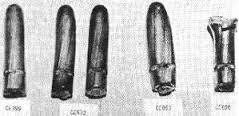
For instance, at his public speaking engagements, Dr. Wecht likes to display House Select Committee on Assassinations Exhibit 294 as shown here.
This exhibit shows the results of bullets test fired from Oswald’s rifle. The bullet at far left is Warren Commission Exhibit 399, the labelled ‘Magic’ bullet that is alleged to have caused all seven non-fatal wounds in JFK and Governor Connally, broke two major bones and emerged in near pristine condition, suffering only 1.5% of substance loss in the course of inflicting that damage.
This flight path, as described, forms the basis for the ‘Single Bullet Theory’ that enabled the Commission to conclude that both men were struck by the same shot fired by Oswald from the Book Depository window.
The bullet second from right was test fired into a goat carcass. Although much less bone damage was inflicted, this bullet still shows more distortion and squeezing at the base than CE399.
The two bullets at left next to CE399 were fired into large vats of cotton wadding while the bullet at far right was fired into the wrist of a cadaver, causing very similar damage to that found in Connally’s wrist.
The test bullet into the cadaver’s wrist shows substantially more weight loss and distortion than does CE399, the bullet purported to cause identical damage in Governor Connally as well as the shattering of his fifth right rib.
Only the two projectiles fired into vats of soft cotton wadding produced bullets that showed as little damage as CE399.
If this exhibit casts reasonable doubt on the probability of the single bullet theory, then a jury must believe that both JFK and Connally were hit by separate shots fired within a second of each other. That denotes two gunmen!
SUPPRESSION OF REASONABLE DOUBT
The Warren Commission also had to dismiss and ignore the FBI’s ballistic testing in efforts to show that CE399 could have caused just the Governor’s wrist wound.
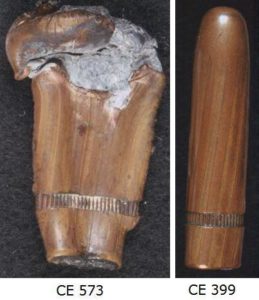
The hope of doing this test was to show that if a test bullet fired into the wrist of a cadaver could produce a similar wound as the Governor’s right wrist and emerge in the near pristine condition of CE399, it could reasonably assert that this bullet could also have caused all the lesser wounds attributed to it.
Oops! As this photo shows, the test bullet (CE573) looks way more damaged than CE399. Without similar ballistic test results to match CE399, the ‘lone’ assassin scenario presented by the government is not established beyond a reasonable doubt as would have been required if Oswald had lived to stand trial.
Could this be why bullet fragments removed from Connally’s wrist and chest were never tested to match them to CE399? Without a match, the single bullet theory falls apart and so does the State’s case for a ‘lone’ assassin named Lee Harvey Oswald.
Through The ‘Oswald’ Window presents other scientific tests that don’t seem to pass the reasonable doubt standard in a court of law, but in my interview with Dr. Wecht for the book, he points to medically altered evidence that would also have been contested at an Oswald trial.
When the Warren Report was released to the public, actual photographs and X-rays of the President’s wounds were withheld from publication because they were deemed too graphic for public consumption.
Instead, the Commission employed a schematic artist named Ida Fox to do more tasteful drawings of the wounds to the President’s body.
This has prompted skeptics to claim that the President’s wounds were altered between the body leaving Parkland Hospital and arriving at the Bethesda Naval Hospital in Maryland for autopsy the same night as the assassination.
Dr. Wecht scoffs at the notion of body tampering even though it would support his claim of conspiracy.
“How would they know what to alter? How would they know there is a Zapruder film recording everything in 1/18th second intervals and what it shows?” questions Dr. Wecht. “You can’t make a wound smaller, only bigger, so the wound in the back and the front of the neck are what they are.”
Still, as one of few forensic pathologists allowed to review the actual photos and X-rays, Dr. Wecht made a startling discovery – The location of the wounds on the President’s body, as well as how they are depicted in the drawings, do not resemble the actual photos and X-rays in the National Archives!
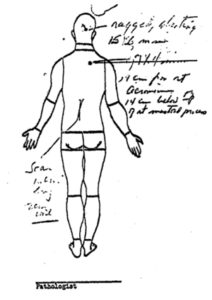
As shown here, the actual autopsy chart shows the back entry wound on JFK to be measured at 5 ¾ inches below the collar line and slightly to the right of the spinal column. This location is confirmed by the FBI autopsy report, the President’s shirt and suit jacket and eyewitness testimony.
Yet, this Ida Fox diagram shows the entry wound to be much higher, closer to the base of the neck! Why did the Commission disregard all the evidence and present the Fox drawing as fact?
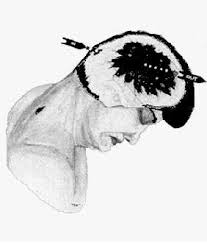
Quite simply because it needed to be able to say the first shot hit JFK in the neck at a downward trajectory from the ‘Oswald’ window and then exited his throat before going on to strike Connally and cause all his wounds. Hence the birth of the ‘Single Bullet’ theory.
With the photos and X-rays locked and sealed from the public for 75 years per executive order by President Johnson, the government believed that the Ida Fox artistic depictions of the wounds would be accepted as fact by the public for years to come.
GUILTY DESPITE COVER-UP?
A public trial of Oswald, of course, would have made a ballistics and medical cover-up very difficult because experts like Dr. Wecht would have been called by Oswald’s defense team to examine the records and interpret them in a courtroom.
So too would have been the Zapruder film, which the Commission says proves all shots came above and behind the President where Oswald was stationed.
This conclusion was accepted as fact by the public because the film was suppressed until 1975, giving the ‘Oswald acted alone’ advocates a 12-year head start.
An expert in film, such as The Killing of a President author Robert Groden, a consultant on Oliver Stone’s movie JFK, would have been called to an Oswald trial to present possible evidence of shots from more than one location based on the same Zapruder film.
And the more than 40 witnesses who claim they heard a shot come from the grassy knoll, or saw a puff of smoke or flash of light come from behind the knoll’s picket fence, would have had their day in court.
All of them were dismissed by the Commission as mistaken due to the ‘trauma of the moment,’ but would they have been so easily dismissed by a jury?
What’s presented here is a small sampling of the government’s determined efforts to ignore, dismiss, alter and suppress any evidence that might suggest Lee Harvey Oswald was not the assassin or did not act alone.
More importantly, we must ask how the overwhelming evidence of conspiracy and cover-up in Through The ‘Oswald’ Window and championed by Dr. Wecht would have affected a jury’s consideration of Oswald as the accused murderer.
The law is supposed to be cut and dried, but as the OJ Simpson verdict demonstrates, reasonable doubt can prevail over what is believed to be iron-clad circumstantial evidence.
This is why mock trials must continue to be held and why organizations like Citizens Against Political Assassinations must be supported in their efforts to ascertain the truth about Lee Harvey Oswald’s role in the assassination of President John F. Kennedy.
Several hours of video of the CAPA mock trial and jury deliberations
are now available. Visit. http://capa-us.org/.
